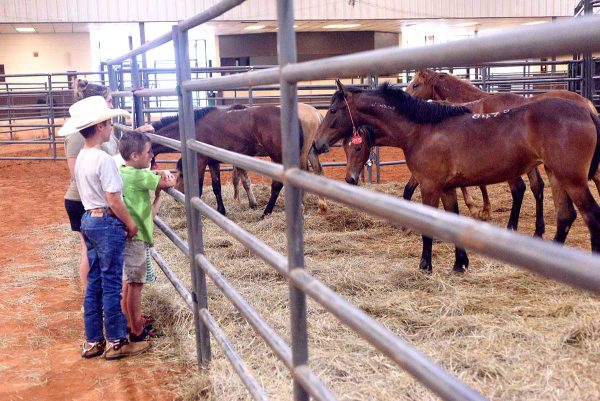Your Extension corner: Slimming down the tailgating menu
Published 2:00 pm Wednesday, August 31, 2011
Pocket meals are the busy cooks best secret. It represents healthy cooking in its simplest form. Basically, you are wrapping food in a piece of foil and allowing steam to cook the food over hot coals, a grill, or your oven. The meal possibilities are endless, and there is little cleanup. However, there are some simple techniques to keep in mind to ensure your meals turn out right.
First of all, you will want to use heavy-duty foil, or double up on regular foil to ensure that the foil doesn’t break over hot coals or leak your marinades. Next, spray one side of the foil with cooking spray or brush lightly with oil. It doesn’t make a difference which side of the foil touches your food. The shiny side is created by the steel rollers as the foil is manufactured. However, if you are using non-stick tin foil, there is a special coating applied to the dull side. In this case the dull side should touch the food.
Next, always place meat on the bottom of the foil because it takes the longest to cook. You may want to pound or cut thicker cuts of meat to about ½ of an inch thick to facilitate cooking. Hard raw vegetables such as carrots and potatoes also take a long time to cook so it’s best to cut them into smaller pieces or use the canned variety if you don’t want to wait. When cooking meat, it’s also a good idea to add a few high moisture veggies like tomatoes and onions to keep the meat from drying out and add great flavor. Onions will cook fast so tuck them between meat and potatoes.
There are several types of pocket meals depending on what you’re cooking. The “flat pack” is better for foods like meat where you want more browning than steaming. Tear off a sheet of heavy-duty foil that is about twice as long as the food you’ll be wrapping. Simply place the food in the middle of the foil. Bring the long sides together in the center and crease them together, making tight folds until the foil is flat next to the food. Finally tightly roll up the shorter sides until they meet the food.
The next type of pocket meal is called the “tent pack.” The tent pack provides a pocket of air that allows for greater steaming. This type is better for foods you want to steam such as fruits, vegetables, and meat/vegetable combos. First, tear off a sheet just as you would for the flat pack and place the food in the middle of the foil. Next, bring the long sides together in the center and tightly fold them together toward the food. This time stop folding a few inches before you get to the food, leaving a pocket of space and creating a “tent.” Tightly roll up the shorter sides, again leaving an inch or so of space between the end of the fold and the food.
Cooking times depend on how hot your fire is and the type of food you are cooking. Cooking times range from 10 minutes per side to 20 minutes, for a total time of 20-40 minutes. Green, yellow and red vegetables cook faster than meat, potatoes or carrots. You may want to cook these vegetables separately as they only take about 8-10 minutes per side. Sliced fruits and berries cook quickly (approx. 7 minutes per side).
Cook your foil packet on the fire’s coals, not the fire itself. A bed of coals about 2 inches thick works best. Flip the packets over a few times during cooking. Open your foil packet carefully away from your face as it is full of hot steam. If you are placing your meal packets on a baking sheet, bake at 450 degrees for approx. 20-25 minutes, turning once half-way through the cooking time.
A meal pocket can be as easy as slicing squash and zucchini in half and marinating with a little olive oil, garlic, salt and pepper. You can experiment with BBQ sauce, salsa, soy sauce, teriyaki, mustard, Italian dressing, broth and more. If adding a liquid, fold all but the last side of your packet. Then pour the liquid, and seal tight.
Pocket meals are great for camping, outdoor summer grilling or a simple week day meal. I encourage you to experiment with herbs and spices as well. With a little practice, you will be preparing simple healthy meals with ease.
For more information about this topic or other nutrition-related topics please contact regional Extension agent, Jennifer Dutton, at the St. Clair county Extension office at
(205) 338-9416 or email jld0021@aces.edu.


